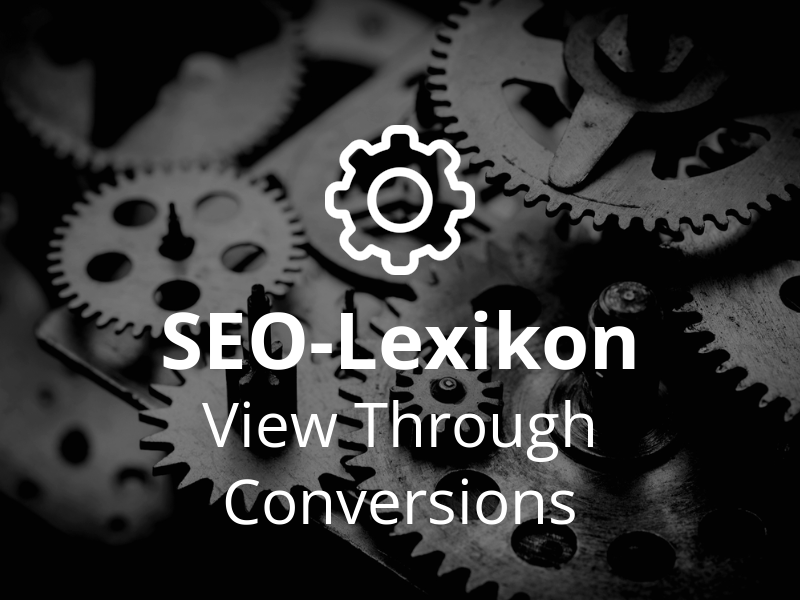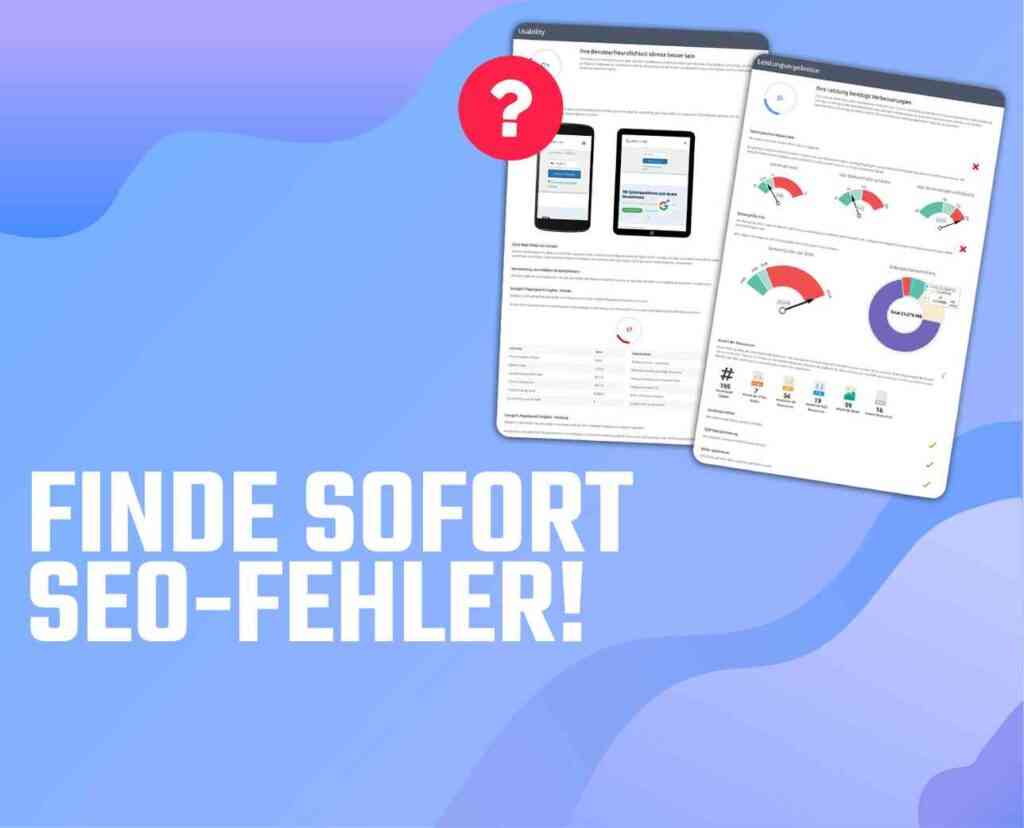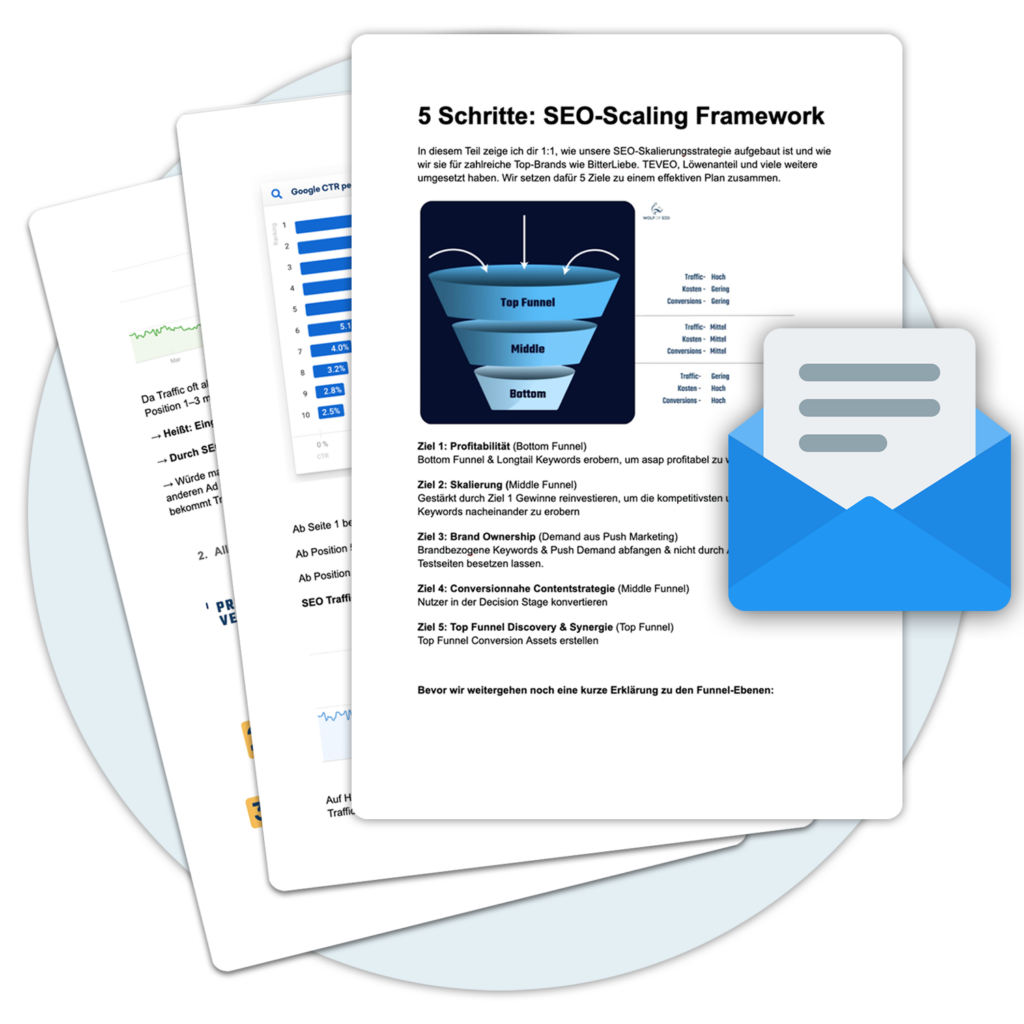Understanding view-through conversions
View-through conversions (VTC) are a special form of conversion measurement that is becoming increasingly important in the world of online marketing. This type of conversion allows advertisers to recognize the value of their display and video ads beyond direct clicks. A basic understanding of VTCs is therefore essential for effective campaign analysis and optimization.
What are view-through conversions?
In essence, view-through conversions identify those users who have not reacted directly to an ad by clicking on it, but who later - after seeing the ad - perform a desired action on the advertiser's website, such as completing a purchase or filling out a form. Unlike conventional conversions, where the user converts immediately after clicking on the ad, VTCs allow the conclusion that the conversion was influenced by the visual contact with the ad, even if this contact did not lead directly to a click.
How does the recording work?
These conversions are recorded by setting a Cookies enables this when a user places an ad in the Google Display network even if they do not click on it. Later, when the user performs the conversion action on the website, the cookie can be read and the conversion is attributed to the previous ad contact. This method gives advertisers valuable insights into the effectiveness of their ads in terms of brand recall and user engagement.
Setting the tracking window
Another key aspect of VTCs is the ability to adjust the view-through conversion window, i.e. the period in which a subsequent conversion is still assigned to the original ad impression. By default, this window is set by Google to one day. However, this setting can be extended to up to 30 days, depending on the needs of the campaign, in order to obtain a more comprehensive picture of the conversions influenced by the ad. Customizing the tracking window is a critical step in making the data as relevant and useful as possible.
By accurately analyzing view-through conversions, advertisers gain a deeper understanding of the role that non-click-based ad impressions play. This is particularly relevant in strategies where display and video ads aim to increase brand awareness rather than generate immediate clicks. Understanding that certain ads ultimately lead to conversion, even if they are not directly clicked, can help advertisers better understand the true value of their digital advertising efforts and target their future campaigns accordingly.
Features and functionality of view-through conversions
The recording and analysis of view-through conversions (VTC) play a central role in modern marketing. Online Marketing. This special type of conversion tracking provides a detailed insight into the effectiveness of advertisements that are not clicked on directly but still have an influence on user behavior. We shed light on the characteristic features and the underlying functionality of these conversions.
Characteristic features
A key feature of view-through conversions is their ability to capture the indirect influence of display or video ads on user behavior. These conversions are registered when users perform a conversion action on the website after seeing an ad without directly responding to it. It provides a unique insight into the passive impact of ads that goes beyond immediate click behavior and promotes long-term brand recall and recognition.
How view-through conversions work
The collection of VTCs is based on the cookie tracking principle. When a user sees an ad in the Google Display network Google places a cookie on the user's device. If this user later carries out a conversion on the advertiser's website within a specified time window, this action can be assigned to the ad via the previously placed cookie. This process makes it possible to evaluate the effectiveness of advertisements in terms of user behavior after the first advertising contact, even if this contact did not lead directly to a click.
Adjusting the view-through conversion window, i.e. the period within which a VTC is recorded, is another important aspect. Set by Google to one day by default, it offers the possibility to extend this window up to 30 days and thus cover a larger period for the recording of conversions. This adjustment allows for a more flexible evaluation of ad effectiveness over a longer period of time, which is particularly relevant for the planning and evaluation of marketing strategies.
By using VTCs, advertisers can more effectively measure and understand the full extent of the advertising impact of their campaigns. This understanding allows them to optimize advertising efforts and target investments to those channels and efforts that deliver the best results in terms of brand awareness and conversion rates. Especially in scenarios where direct interactions with ads are less frequent, view-through conversions provide valuable insights to comprehensively evaluate and adjust the effectiveness of marketing strategies.
The tracking window for view-through conversions
Determining the appropriate tracking window is a critical factor when analyzing view-through conversions (VTCs). This period defines how long after an ad impression a conversion can still be attributed to this specific ad. The tracking window should be chosen strategically in order to obtain as accurate a picture as possible of the ad's impact.
Standard tracking window and customization options
Originally set by Google to one day, the standard tracking window forms a basis for recording VTCs. This time period was chosen with the intention of measuring short-term reactions to ad impressions. However, it was quickly recognized that different products and services can also trigger different decision periods among consumers. For this reason, Google offers the option to customize this window. Advertisers have the option to extend the tracking window up to 30 days to develop a broader understanding of how long-term ad exposure can influence consumer behavior.
Determination of the optimum tracking window
The decision on the length of the tracking window should be based on the analysis of typical customer behavior and the Customer Journey based. Long decision cycles or purchase processes, which often occur with high-priced products or services, require a longer tracking window. This makes it possible to more accurately capture the impact of ads on consumer decision-making. Conversely, a shorter window may make more sense for products that are usually purchased impulsively, as the direct effect of the ad is more relevant here.
Effects of the window length on the conversion assignment
Determining the tracking window directly influences how many conversions can be attributed to the ads. A longer window tends to capture more view-through conversions, which can be particularly valuable for campaigns aimed at long-term branding or generating awareness. However, it's important to strike a balance to avoid overestimating ad impact. Too long a window could result in conversions being captured that in reality have little or nothing to do with the ad being viewed. Therefore, carefully monitoring and adjusting the tracking window if necessary is an ongoing process to ensure the accuracy of the data.
Defining the tracking window for view-through conversions is therefore an essential step in understanding and measuring the actual impact of ads on conversion rates. Thoughtful customization of this window allows for more precise attribution of conversions to ads and provides valuable insights into the effectiveness of the advertising strategy.
Customization and analysis of reporting options
Advanced customization and detailed analysis of reporting options are essential elements in the process of evaluating view-through conversions (VTCs). They allow advertisers to develop a deeper understanding of the effectiveness of their advertising campaigns and the conversions they achieve. Through the targeted application of these options, a more precise attribution of conversion successes to specific advertising measures can be achieved.
Individual customization of the report columns
To gain a comprehensive insight into conversion performance, various report columns available in the analytics tools enable in-depth evaluation of the data. Advertisers can add specific columns to focus on the metrics relevant to them - for example, "Conversion", "Cost per conversion", "Conversion rate" and "Total value of conversion". This flexibility in reporting is particularly beneficial for accurately measuring the effectiveness of marketing measures and making informed decisions for future campaigns.
Detailed insights through specialized reports
In addition, options for "All conversions" and "Cross-device conversions" offer further insights. They make it possible to get a more complete picture of user interactions by also capturing conversions that take place across different devices or times of use. This data is invaluable, especially in an increasingly connected world where users switch between devices. By analyzing cross-device conversions, advertisers can understand how ads on one device can influence user behavior on another.
Optimization of the conversion allocation
By adjusting the reporting options based on the conversion counting model or the attribution model, advertisers can also refine the allocation of conversions to the respective ads. This allows a more precise attribution of the advertising effects, for example by specifying which conversions within the tracking window set are actually regarded as successful due to the ad in question. Such a more precise view helps to evaluate the real contribution of an ad to the company's success and thus to optimize the allocation of resources for future campaigns.
Customizing and analyzing the reporting options therefore makes a significant contribution to evaluating campaign effectiveness. By specifically filtering and analyzing the available data volumes, advertisers can gain a more detailed understanding of the performance of their advertisements and adapt their marketing strategy accordingly. This approach not only enables a more effective use of the marketing budget, but also makes a significant contribution to increasing the overall performance of online advertising campaigns.
Importance of view-through conversions for display and video ads
View-Through Conversions (VTCs) have proven to be a crucial tool in capturing the true value of display and video ad campaigns in digital marketing. This form of conversions is characterized by their ability to measure the indirect impact of ads on consumer behavior and ultimately conversion rates. Especially in today's fast-paced online world, where users are confronted with a flood of advertising messages on a daily basis, it offers marketers valuable insights into the effectiveness of their advertising measures.
Increase brand awareness
A key element that underlines the importance of VTCs for display and video ads is their contribution to increasing brand awareness. Even if users do not immediately click on an ad, the mere exposure to the ad can anchor the brand in the viewer's mind. This passive interaction contributes to brand recall over time, which can later lead to an increased likelihood of conversion, even if it happens outside of the immediate time window of ad interaction.
Evaluation of ad performance beyond direct clicks
VTCs make it possible to measure the success of campaigns by recording conversions that do not result directly from a click on the ad. In practice, this means that advertisers get a more comprehensive view of how their ads are performing. This additional level of measurement helps to identify whether an ad is able to influence the interest and actions of the target audience, even if they do not respond immediately. Understanding these indirect effects is particularly important for display and video ads, as their objectives often go beyond direct conversions and are also aimed at long-term goals such as brand building and loyalty.
Optimization of advertising budgets and strategies
By accurately analyzing VTCs, advertisers can allocate more efficient advertising budgets and optimize their strategies according to the insights gained. When it becomes clear which ad formats and content generate a high number of view-through conversions, marketers can adjust their campaigns accordingly to maximize this form of impact. This enables a targeted allocation of resources to those ads that contribute to increasing conversion rates and brand awareness not only directly, but also through long-term effects.
Overall, the importance of view-through conversions for display and video ads is reflected in their ability to map the complex process of customer acquisition in the digital advertising landscape. By revealing the subtle but powerful influences of these ad formats on consumer behavior, they make an indispensable contribution to the analysis and optimization of online marketing strategies.
Challenges in recording view-through conversions
Capturing view-through conversions (VTCs) presents advertisers with a number of challenges that need to be overcome in order to correctly evaluate the effectiveness of their campaigns. These challenges are both technical and methodological in nature and require a deep understanding of the underlying processes as well as the behaviors of the target audience. A precise analysis and adaptation of procedures are therefore essential for the successful use of VTCs.
Technical restrictions and data protection
A primary challenge in the collection of VTCs is the increasing sensitivity in the area of data protection and the associated technical limitations. As VTCs are based on cookie tracking, users who regularly use their Cookies delete or Browser use the trackingCookies are not recorded correctly. This can lead to an underestimation of the actual number of conversions and thus distort the picture of ad performance. In addition, constantly changing privacy policies and technologies require continuous adaptation of data collection methods in order to remain compliant and still collect relevant data.
Assignment of conversions to ad impressions
Another problem is the correct attribution of conversions to the corresponding ad impressions. In a world where users interact across different devices and channels, it can be difficult to clearly attribute a conversion to a specific ad impression. Cross-device tracking methods and specialized Attribution models are necessary to assess the contribution of display and video ads to the Customer Journey accurately. The complexity of user paths requires advanced analytics, which is often a challenge for advertisers.
Customization of the tracking window
Determining the optimal tracking window for VTCs is another hurdle. A window that is too short could exclude many conversions that only take place after a longer user consideration phase, while a window that is too long runs the risk of capturing irrelevant conversions that are not actually attributable to the ad. The ideal length of the tracking window depends on many factors, such as the type of product advertised or the typical Customer Journey. Continuous optimization and a deep understanding of the target group's purchasing behavior are required to determine an adequate window length.
The aforementioned challenges call for continuous efforts on the part of advertisers and technology providers to improve the accuracy and informative value of view-through conversion data. Innovative solutions that combine advanced tracking technologies and privacy-friendly approaches are needed to succeed in the dynamic world of online marketing.
Influence of cookie deletions on view-through conversion data
The accuracy of View-Through Conversion (VTC) data is significantly affected by user actions such as the deletion of Cookies influenced. Cookies play a central role in tracking conversions, as they make it possible to link an ad that a user has seen with a subsequent conversion activity on the advertiser's website. The regular deletion of Cookies by users is therefore one of the greatest challenges for the precise recording and analysis of VTCs.
Effects on data quality
If a user wants to delete the data stored on their device Cookies deletes the tracking cookie, the attribution information linking the ad contact to a later conversion is lost. This means that even if the user has seen the ad and later performs a conversion, this activity is no longer recorded as the tracking cookie is missing. Consequently, the deletion of Cookies leads to an underestimation of the actual number of view-through conversions, which makes the performance of display and video ad campaigns appear less effective in advertisers' reports.
The challenge of attributing conversions
The ability to accurately measure and evaluate the effectiveness of advertising campaigns is further complicated by cookie deletions. Without a reliable cookie history, conversions may not be correctly attributed, resulting in a distorted view of campaign performance. This limits advertisers' ability to understand which promotions are actually contributing to conversions. Accurately measuring return on investment (ROI) and optimizing future campaigns based on reliable data becomes challenging.
Adaptation strategies and future technologies
In order to minimize the impact of cookie deletion on view-through conversion data, advertisers and technology providers use advanced tracking methods and Attribution models in. These approaches aim to track user activity across multiple devices and sessions and create a more robust database for analyzing advertising effectiveness. Furthermore, the development of privacy-friendly tracking solutions that are not solely based on Cookies as a long-term strategy to meet the challenges associated with data protection regulations and user behavior.
All in all, the tendency of users to regularly Cookies to delete, the collection and analysis of view-through conversion data has become a challenging task. This requires advertisers to continually commit to adapting their tracking and analytics methods to the changing digital landscape in order to accurately assess the effectiveness of their online ads.
« Back to Glossary Index






